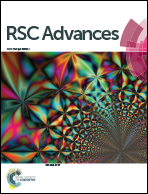Applicability of biomass autohydrolyzates as corrosion inhibiting deicing agents
Abstract
A deicing agent from renewable resources is necessary to overcome the disadvantages of traditional deicing agents. In this study, biomass autohydrolyzate was evaluated for its applicability as corrosion inhibiting deicing agents. Autohydrolyzates treated with alkali showed significant freezing point depression and corrosion inhibiting effects on mild steel. Freezing points for autohydrolyzate treated with 2% (w/w) sodium hydroxide were depressed at −64.0 °C (56% solids content), and its maximum corrosion inhibiting efficiency was 61.5%. This material was found to be more effective than a tested commercial deicing agent. This strong performance is considered due to the xylooligosaccharides being degraded to various sugar acid compounds under alkaline treatment conditions, providing the mixture with solutes with corrosion inhibition potency. In conclusion, alkaline treated autohydrolyzate could replace traditional deicing agents based on superior performance and a sustainable production scheme.



 Please wait while we load your content...
Please wait while we load your content...